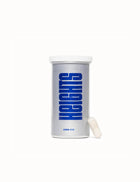
Biotic⁺

Gratis Versand auf Bestellungen ab 50 €






4.8/5 based on 6,169+ reviews






Rabattcode? Füge ihn im nächsten Schritt hinzu.
4.8/5 based on 6,169+ reviews

By bundling them, you save 14% every month – getting you the best price.

By bundling them, you save 14% every month – getting you the best price.

By bundling them, you save 14% every month – getting you the best price.

By bundling them, you save 18% every month – getting you the best price.

By bundling them, you save 18% every month – getting you the best price.

By bundling them, you save 18% every month – getting you the best price.

By bundling them, you save 18% every month – getting you the best price.
Vitamin D3, aka the “sunshine vitamin" can lift your mood and support immunity, as well as build strong bones and teeth.

Vitamin D3, aka the “sunshine vitamin" can lift your mood and support immunity, as well as build strong bones and teeth.
The nutrient reference value (NRV—formerly RDA) is 10 mcg/day (or 400 IU).
1 billion people in the world are suffering from vitamin low D.
Researchers have now concluded that we need more vitamin D than is currently recommended for overall health and to prevent chronic diseases.
Granted, your body makes vitamin D when those golden rays of sunshine fall on your skin, and also when you eat certain foods, but it’s not always enough. Moreover, coronavirus (SARS-CoV-2) has forced people to spend more time indoors, so Public Health England (PHE) has asked everyone (not just at-risk groups) to consider taking a daily vitamin D supplement.
Vitamin D3 is a nutritional superhero that helps to prevent cognitive decline, as well as playing an important role in immune function. It’s involved in many brain processes including neuro-immunomodulation (a fancy way of saying that it regulates the production of compounds in your brain that can boost your immune system).
Receptors for vitamin D3 (and the enzyme that converts it into its active form) are present in the parts of your brain that control cognitive function as you age.
As you get older, the cells in your skin make less vitamin D from sunlight ( cutaneous synthesis ). Also, you may begin to spend less time outdoors and eat less of foods that are fortified with vitamin D.
This means that ageing adults are at risk of vitamin D deficiency. It also means that vitamin D may also influence some age-related medical conditions. It’s important that older adults aged 60 years and over consider taking a vitamin D supplement .
Vitamin D comes in two forms: ergocalciferol (vitamin D2) and cholecalciferol (vitamin D3). Vitamin D3 is the biologically-active form and is the more powerful of the two, increasing blood levels of vitamin D twice as much as D2. Vitamin D is the form most commonly found in fortified food products, while vitamin D3 mainly comes from animal sources such as fish oil and liver.
Since 35% of total vitamin D intake from food is from meat and meat products (including fish), vegetarians need to get creative with supplementing their diet with vitamin D3. People who can’t tolerate or consume milk and eggs are also at higher risk of low vitamin D3 levels.
Most vitamin D3 comes from exposure to sunlight. However, eating the following foods also provides the body with some vitamin D3.
Salmon
Trout
Tuna
Swordfish
Sturgeon
Cod liver oil
Meat and meat products
Fortified milk and milk products
Fortified cereal and cereal products – about 13-20% of the total dietary intake of vitamin D in the UK population comes from these products
Fortified orange juice
Mushrooms
Eggs, hard-boiled

The average brain health score is 51/100. Take our 3-minute quiz to learn how yours measures up and how to boost it.

 Supplements
Supplements
4 minutes read
Laura Sugden
 Supplements
Supplements
5 minutes read
Sophie Medlin
 Supplements
Supplements
6 minutes read
Heights
 Supplements
Supplements
4 minutes read
Heights
 Supplements
Supplements
4 minutes read
Ruby Dalziel
 Supplements
Supplements
5 minutes read
Heights







